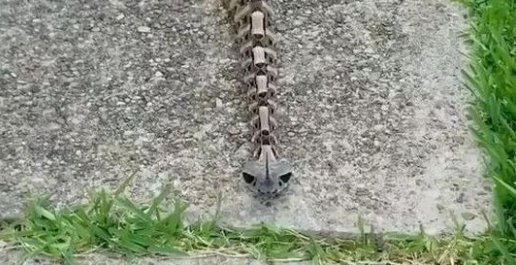Deep within the African rainforests, a fascinating creature has long captivated the imagination of many. At first glance, the Gaboon Viper may resemble a toy snake skeleton, but this mesmerizing serpent is, in fact, one of the largest and deadliest vipers on the African continent.
The Gaboon Viper’s impressive size, vibrant camouflage, and potent venom make it a master of disguise and a formidable hunter. Its ability to blend seamlessly into the leaf litter on the forest floor, combined with its patient and strategic approach to ambushing prey, has earned it a reputation as one of Africa’s most feared predators.
This incredible snake boasts an array of remarkable features, including fangs that hold the record for being the longest among all venomous serpents. Measuring up to 2 inches in length, these fangs deliver a potent cocktail of enzymes and toxins capable of causing severe tissue damage and excruciating pain.

Despite its fearsome reputation, human encounters with the Gaboon Viper are rare, thanks to its preference for remote habitats and non-aggressive behavior. However, when unintentional encounters do occur, the consequences can be fatal if anti-venom is not obtained promptly.
Interestingly, some snake enthusiasts have been known to keep the Gaboon Viper as a pet, despite the risks involved. In recent years, there have been reports of Gaboon Viper owners being bitten, resulting in severe consequences, including the loss of fingers.
Fortunately, such incidents are extremely rare, and the likelihood of encountering this venomous snake in the United States is very low. Nevertheless, the Gaboon Viper remains a fascinating creature that continues to captivate and inspire awe in those who are lucky enough to catch a glimpse of it.
As we delve into the mysteries of the Gaboon Viper’s existence, we are reminded of the delicate balance of power and beauty that defines the natural world. This incredible creature stands as a testament to the wonders of nature, showcasing its remarkable ability to adapt, survive, and thrive in the African rainforests.


